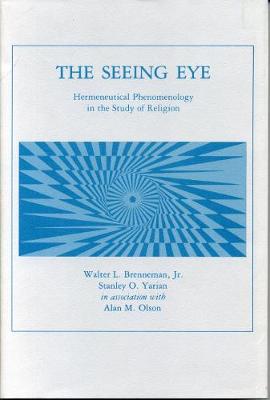Establishing a link between phenomenology and hermeneutics as seen by philosophers (notably Heidegger and Husserl) and as applied by students of religion (notably Eliade and van der Leeuw) is the pioneering aim of this book. No existing book ties together the cross-disciplinary strands in a way that is useful for religious studies.
A phenomenological and therefore hermeneutical approach to religion "prides itself on being aware of its own presuppositions and those of others that are brought to bear on data to be interpreted." Thus it "seeks to gain an access to the religious worlds of other peoples in as pure a form as possible." Phenomenological hermeneutics differs from the traditional comparative study of religion in an important way: the new method attempts an empathic understanding of religious experiences before making any comparisons or drawing any inferences.
Part I shows how the phenomenological approach must arise from a "crisis of doubt within the prevailing tradition." It goes on to compare this approach to the mystics' understanding of the "scope and limitations of rational consciousness," contrasting it with the nominalists' dichotomy between faith and reason. Part II starts with Eliade's "creative hermeneutics," which holds that an object or an act becomes real only insofar as it imitates or repeats an archetype, particularly the archetype of the sacred. It goes on to develop Cassirer's point that "myth is a particular way of seeing." Part Ill starts by showing how art, like religion, is an "imitation of an archetype." It goes on to apply hermeneutical phenomenology to the interpretation of ritual. "Ritual gesture," Chapter 6 argues, "thematizes the world," establishing a mystical symbolic relationship between body and world, the seen and the unseen. Part Ill continues with a critique of the writings of Carlos Castaneda, arguing that these contain "the symbolic elements of both archaic shamanism and classical mysticism."
The final chapter treats the "three-tiered cosmos" that is universal in folklore: the tier of family-home-land-artifacts, the tier of clan-tribe-nation, and the tier of weather-seasons-natural forces, Each tier has its loric power, and these powers are united by shamans and mystics in one sacred "kingdom of power."
- ISBN10 0271002913
- ISBN13 9780271002910
- Publish Date 1 October 1990
- Publish Status Out of Print
- Out of Print 27 January 2021
- Publish Country US
- Imprint Pennsylvania State University Press
- Format Paperback (US Trade)
- Pages 168
- Language English
